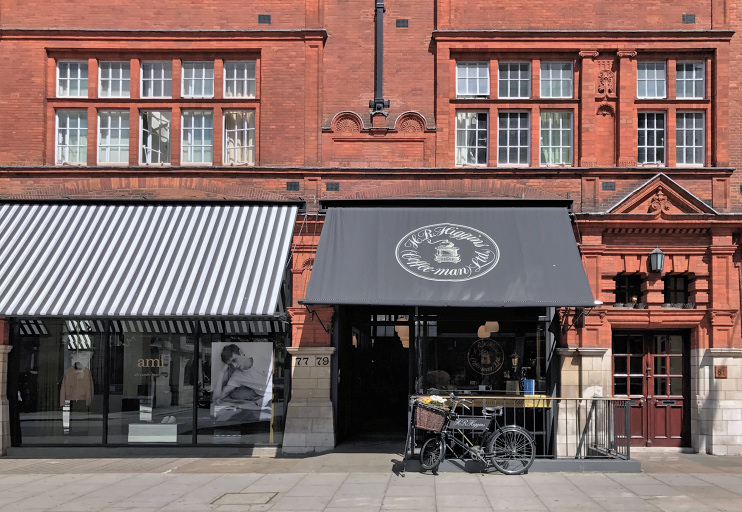Mayfair
Mayfair, Westminster
An elite residential and commercial quarter bounded by Park Lane, Oxford Street, Regent Street and Piccadilly

Like Belgravia, its main rival as the most prestigious district in London, much of the land here became the property of Sir Thomas Grosvenor in 1677 on the occasion of his marriage to the Ebury heiress Mary Davies.
In 1686 a two-week May fair transferred from Haymarket to Great Brook Field, where Curzon Street and Shepherd Market now stand. In common with almost every London fair it became notorious for its ‘loose, idle and disorderly’ crowds – and the event was exiled to Bow in 1764. By this time, the neighbouring fields had been laid out with high-class residential streets and squares, notably Berkeley Square, Grosvenor Square and Hanover Square, while Bond Street had filled with fashionable shops.
Some of Mayfair’s most charming streets are the ones that its developers reserved for tradesmen and which were later distinctively rebuilt; the 1890s terracotta frontages of Mount Street and Arts and Crafts houses in Mount Row provide the best examples.
During the First and Second World Wars wealthy residents evacuated themselves to the countryside and, when many chose not to return afterwards, Westminster council allowed the temporary conversion of some homes to offices, many of which were used by spies. As those permissions have expired, ‘new money’ has come into southern Mayfair and restored its reputation as a prime residential address.
Mayfair is renowned for its exclusive boutiques, many of which hold a royal warrant. Bond Street seems almost downmarket compared with the rarefied retailers of South Audley Street and Curzon Street, which also has private gambling clubs, the offices of hedge funds and the Curzon Mayfair cinema.
Auction houses cluster on Bond Street, art dealers around Cork Street and tailors in Savile Row. The villagey Shepherd Market has emerged from a dubious past to acquire bars and bistros. The slightly less swanky northern part of Mayfair is primarily taken up by offices and private colleges and clinics. Embassies and plush hotels are dotted all around.
Benjamin Disraeli, prime minister in 1868 and from 1874 to 1880, died at 19 Curzon Street in 1881. Other Mayfair residents have included the writers Richard Sheridan and Somerset Maugham. Queen Elizabeth II was born at 21 Bruton Street in 1926.
The musicians George Frideric Handel and Jimi Hendrix lived at numbers 25 and 23 Brook Street.
Postal district: W1
Further reading: Peter Thompson with Marcella Evaristi, The Private Lives of Mayfair, Thistle, 2014
